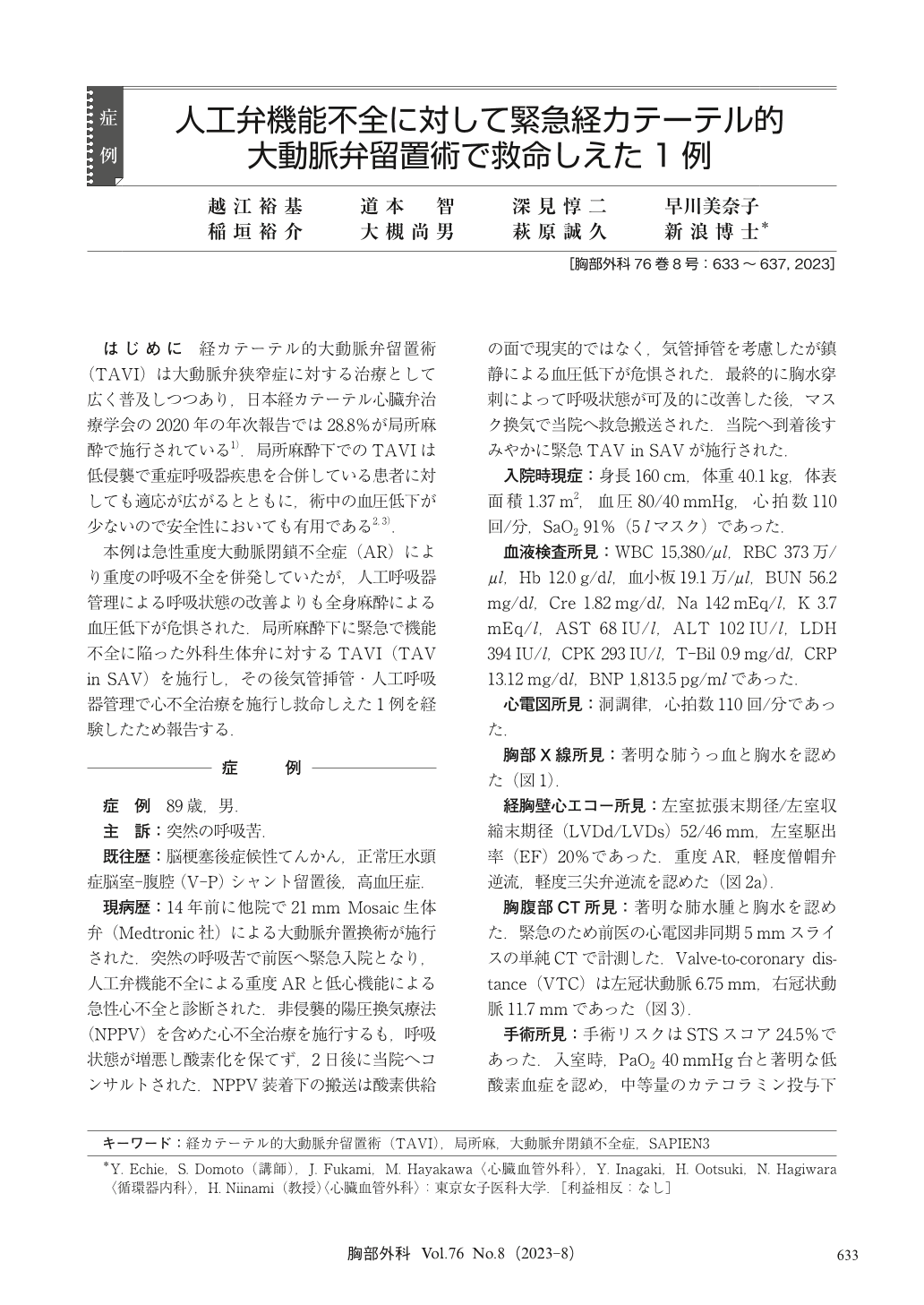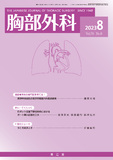Japanese
English
- 有料閲覧
- Abstract 文献概要
- 1ページ目 Look Inside
- 参考文献 Reference
はじめに 経カテーテル的大動脈弁留置術(TAVI)は大動脈弁狭窄症に対する治療として広く普及しつつあり,日本経カテーテル心臓弁治療学会の2020年の年次報告では28.8%が局所麻酔で施行されている1).局所麻酔下でのTAVIは低侵襲で重症呼吸器疾患を合併している患者に対しても適応が広がるとともに,術中の血圧低下が少ないので安全性においても有用である2,3).
An 89-year-old man who had undergone aortic valve replacement with a 21 mm Mosaic bioprosthetic valve at another hospital 14 years ago was admitted to the emergency room for a sudden respiratory distress two days prior and was diagnosed with severe aortic regurgitation (AR) caused by valve insufficiency and acute heart failure secondary to low cardiac function. Upon admission, he was found to have severe hypoxia with PaO2 of 40 mmHg range, and transcatheter aortic valve replacement (TAVI, TAV in SAV) with a 20 mm SAPIEN3 was performed under local anesthesia for fear of hypotension while under general anesthesia. After confirming that AR had completely disappeared, the patient was intubated and discharged from the operating room on a mechanical ventilator. The patient was weaned from the ventilator on the second postoperative day and was transferred to the other hospital for rehabilitation, 48 days postoperatively. Although there is no report on the comparative study of anesthesia methods for emergency transcatheter aortic valve implantation (TAVI), TAVI under regional anesthesia is minimally invasive with a lower risk for hypotension than general anesthesia. Therefore, we believe it is useful for patients with acute heart failure and hypotension. In addition, it is important to use a balloon expandable valve with excellent implantability to complete the procedure in a short time.

© Nankodo Co., Ltd., 2023


